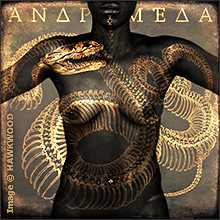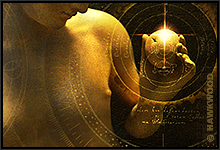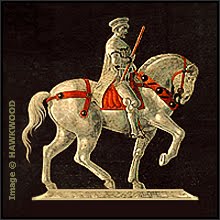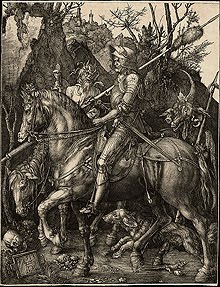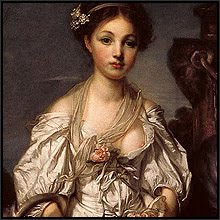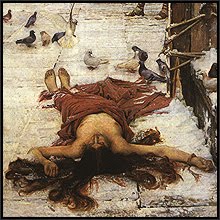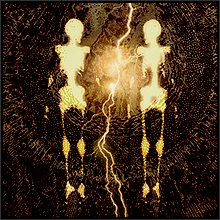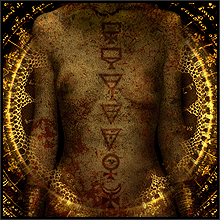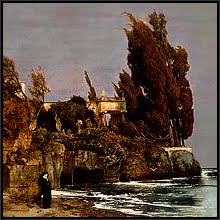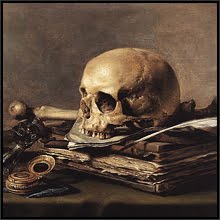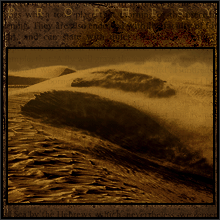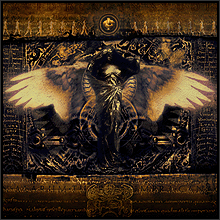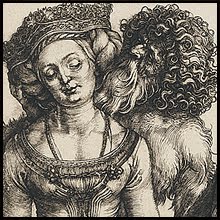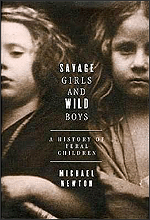 Last week found me in Meneer H's shop once again, and knowing my taste in these things, he disappeared briefly into a small annex and reappeared with a leather-bound volume (my photo, above) which he placed upon the glass-topped counter for my inspection. At first glance the book seemed a puzzle. The leather covers (probably calfskin, although this is not certain) were a dark, nondescript greyish-brown, and felt somewhat oily to the touch. 15th century, I guessed. But the ribbed spine did not match the covers, and seemed to be from a later period by perhaps as much as a century. Meneer H considered it to be a hybrid binding - one which, due to damage or for some other reason, has been partially rebound at some stage of its history. I agreed.
Last week found me in Meneer H's shop once again, and knowing my taste in these things, he disappeared briefly into a small annex and reappeared with a leather-bound volume (my photo, above) which he placed upon the glass-topped counter for my inspection. At first glance the book seemed a puzzle. The leather covers (probably calfskin, although this is not certain) were a dark, nondescript greyish-brown, and felt somewhat oily to the touch. 15th century, I guessed. But the ribbed spine did not match the covers, and seemed to be from a later period by perhaps as much as a century. Meneer H considered it to be a hybrid binding - one which, due to damage or for some other reason, has been partially rebound at some stage of its history. I agreed. The book had been acquired by Meneer H from an estate clearance auction. The deceased (for insurance purposes) had itemised the volume in his collection as 'Het Boek van het Schimmenrijk' - The Book of (or from) the Kingdom of Shadows. But 'schimmen' is an elusive word to translate. It implies not merely shadows, but illusions, false realities, the deceitful appearance of things - even ghosts. The clue to the book's name could be found in the carefully lettered Gothic script on its cover (the scanned detail, above). As near as I can make it out, the phrase reads:
The book had been acquired by Meneer H from an estate clearance auction. The deceased (for insurance purposes) had itemised the volume in his collection as 'Het Boek van het Schimmenrijk' - The Book of (or from) the Kingdom of Shadows. But 'schimmen' is an elusive word to translate. It implies not merely shadows, but illusions, false realities, the deceitful appearance of things - even ghosts. The clue to the book's name could be found in the carefully lettered Gothic script on its cover (the scanned detail, above). As near as I can make it out, the phrase reads:"Om dat de Schimmen zijn ongetru, Darr om gha ik in den ru"
Now, this is 16th century Dutch, almost as remote from contemporary Dutch as Chaucerian English (which it curiously resembles). But by converting it into approximate modern Dutch ("Omdat de Schimmen zijn ontrouw, daarom ga ik gekleed in rouw") my best shot at a translation is this: "Because the Shadows are untrustworthy (or unfaithful) - that is why I go clad in mourning." The color of mourning is black, and I have this mental image of some unknown, black-robed figure, broken from some deep loss, despairing, betrayed, disillusioned, after an encounter with.. what, exactly? The tone of the phrase, and the capitalised term 'Schimmen', implies something dark. Written across the front of the book, it reads almost like a warning.
 Above the two-line phrase, and written by a different, perhaps much earlier hand, are the two words: 'Escharoth' and 'Malchut' (the scanned detail, above). To whom - or what - do these names refer? Demonic entities? Down almost the entire cover run four deeply-scratched furrows, having the appearance almost of the raking tracks of great claws or talons. But even all these features are not the most curious.
Above the two-line phrase, and written by a different, perhaps much earlier hand, are the two words: 'Escharoth' and 'Malchut' (the scanned detail, above). To whom - or what - do these names refer? Demonic entities? Down almost the entire cover run four deeply-scratched furrows, having the appearance almost of the raking tracks of great claws or talons. But even all these features are not the most curious.On the paginations fore-edge are two metal clasps. Outwardly, there is nothing unusual about these, as such clasps are seen on many books of the period. What makes these clasps unusual (and which is the reason why I managed to acquire the book at a 'sight unseen' price) is that there seems to be no means whatever for unfastening them. They are, therefore, not so much clasps, as seals. The book cannot be opened.
And that is my dilemma. Having become the owner of the book, should I force the metal seals to discover its contents? Would it even be 'safe' to do so? Since it has been in my house, I have noticed an oppressiveness in my studio where it is now kept with the rest of my collection. Is the book perhaps dangerous? Is it even real? Of course it's not! After all, I did say that the 'Schimmen' were not to be trusted..
Happy All Hallows' Eve to my readers!

Artist: Hawkwood
Work: The Book from the Kingdom of Shadows, 2009
Medium: Digital (composite textural, lighting, typographic and other effects created using Photoshop CS and Ulead Photo Express software). Font for the 'demon' names: 'Aquiline'. Font for the 'Schimmen' phrase: 'Dürer Gothic' (yes, it actually was designed by Albrecht Dürer). The 'talon marks' were created wholly digitally with Photoshop embossing filters. Now you know!
Thanks to Henderickx and Winderickx antiquarian and second-hand bookshop, Utrecht, for the inspiration.



